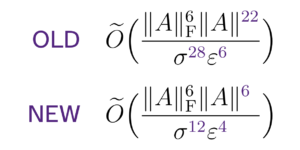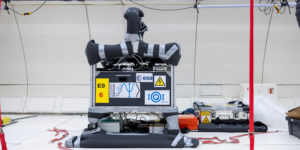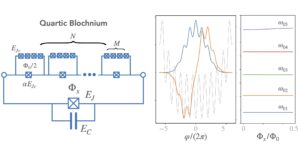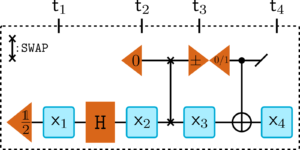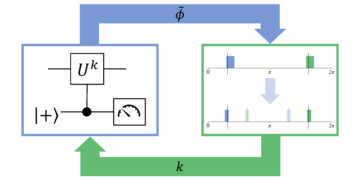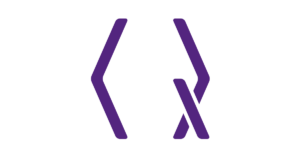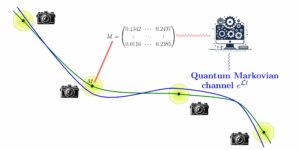1Institute of Computer Science, Johannes Gutenberg University, Staudingerweg 9, 55128 Mainz, Germany
2Institute of Physics, Johannes Gutenberg University, Staudingerweg 7, 55128 Mainz, Germany
Find this paper interesting or want to discuss? Scite or leave a comment on SciRate.
Abstract
The increasing capabilities of quantum computing hardware and the challenge of realizing deep quantum circuits require fully automated and efficient tools for compiling quantum circuits. To express arbitrary circuits in a sequence of native gates specific to the quantum computer architecture, it is necessary to make algorithms portable across the landscape of quantum hardware providers. In this work, we present a compiler capable of transforming and optimizing a quantum circuit targeting a shuttling-based trapped-ion quantum processor. It consists of custom algorithms set on top of the quantum circuit framework Pytket. The performance was evaluated for a wide range of quantum circuits and the results show that the gate counts can be reduced by factors up to 5.1 compared to standard Pytket and up to 2.2 compared to standard Qiskit compilation.
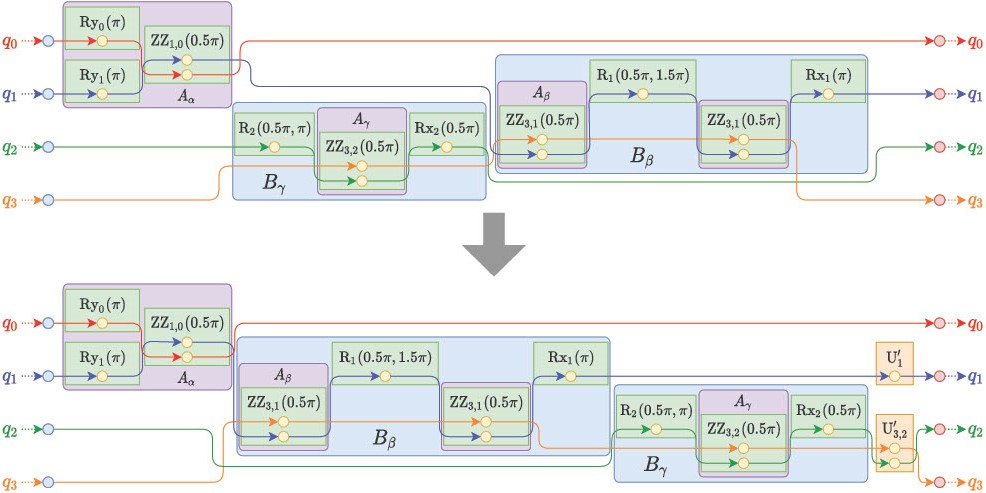
Featured image: The graph representation of a quantum circuit used in our paper. The purple boxes are aggregations calculated by our compiler during the compilation process. Aggregations allow the parallelization of certain single-qubit gates contained in them. The blue boxes represent superblocks. Commuting the superblocks, as shown in the image, reduces the number of shuttling operations and requires local corrections on the involved qubits, represented by the orange unitaries.
Popular summary
To run an arbitrary algorithm on such a quantum computer, the quantum circuit describing the gate sequence to be executed must be translated into instructions which the quantum computer understands. This is similar to compiling code of a high-level language into assembler code for classical computers. Just as different processors of classical computers have different instruction sets and components, which a compiler must address during compilation, different quantum computers have different native gates and properties that can be exploited to improve the accuracy of the result.
In our paper, we present a quantum circuit compiler, which transforms a given quantum circuit into the native gate set of a trapped-ion quantum computer and performs optimizations on the code to increase the accuracy of the result. Such optimizations include various ways of reducing the number of gates performed, as well as rearranging them so that the circuit has more favorable properties, such as less ion movement.
► BibTeX data
► References
[1] F. Arute et al. “Quantum supremacy using a programmable superconducting processor”. Nature 574, 505–510 (2019).
https://doi.org/10.1038/s41586-019-1666-5
[2] L. Postler et al. “Demonstration of fault-tolerant universal quantum gate operations”. Nature 605, 675–680 (2022). arXiv:2111.12654.
https://doi.org/10.1038/s41586-022-04721-1
arXiv:2111.12654
[3] L. Egan et al. “Fault-tolerant control of an error-corrected qubit”. Nature 598, 281–286 (2021).
https://doi.org/10.1038/s41586-021-03928-y
[4] J. Preskill. “Quantum Computing in the NISQ era and beyond”. Quantum 2, 79 (2018). arXiv:1801.00862.
https://doi.org/10.22331/q-2018-08-06-79
arXiv:1801.00862
[5] D. Kielpinski, C. Monroe, and D. J. Wineland. “Architecture for a large-scale ion-trap quantum computer”. Nature 417, 709 (2002).
https://doi.org/10.1038/nature00784
[6] V. Kaushal et al. “Shuttling-based trapped-ion quantum information processing”. AVS Quantum Science 2, 014101 (2020). arXiv:1912.04712.
https://doi.org/10.1116/1.5126186
arXiv:1912.04712
[7] J. M. Pino et al. “Demonstration of the trapped-ion quantum CCD computer architecture”. Nature 592, 209–213 (2021).
https://doi.org/10.1038/s41586-021-03318-4
[8] P. Murali, D. M. Debroy, K. R. Brown, and M. Martonosi. “Architecting Noisy Intermediate-Scale Trapped Ion Quantum Computers”. In Proceedings of the ACM/IEEE 47th Annual International Symposium on Computer Architecture. Page 529–542. ISCA ’20. IEEE Press (2020). arXiv:2004.04706.
https://doi.org/10.1109/ISCA45697.2020.00051
arXiv:2004.04706
[9] J. Hilder et al. “Fault-Tolerant Parity Readout on a Shuttling-Based Trapped-Ion Quantum Computer”. Phys. Rev. X 12, 011032 (2022). arXiv:2107.06368.
https://doi.org/10.1103/PhysRevX.12.011032
arXiv:2107.06368
[10] J. Wagner. “Automated generation of shuttling schedules for a scalable trapped-ion quantum processor”. Master’s thesis. Johannes Gutenberg University Mainz. (2022).
[11] J. Durandau. “Automated Generation of Shuttling Sequences for a Linear Segmented Ion Trap Quantum Computer” (2022). arXiv:2208.04881.
arXiv:2208.04881
[12] A. A. Saki, R. O. Topaloglu, and S. Ghosh. “Muzzle the Shuttle: Efficient Compilation for Multi-Trap Trapped-Ion Quantum Computers”. In 2022 Design, Automation & Test in Europe Conference & Exhibition (DATE). Pages 322–327. (2022). arXiv:2111.07961.
https://doi.org/10.23919/DATE54114.2022.9774619
arXiv:2111.07961
[13] T. Schmale et al. “Backend compiler phases for trapped-ion quantum computers”. In 2022 IEEE International Conference on Quantum Software (QSW). Pages 32–37. Los Alamitos, CA, USA (2022). IEEE Computer Society. arXiv:2206.00544.
https://doi.org/10.1109/QSW55613.2022.00020
arXiv:2206.00544
[14] M. Webber, S. Herbert, S. Weidt, and W. K. Hensinger. “Efficient Qubit Routing for a Globally Connected Trapped Ion Quantum Computer”. Advanced Quantum Technologies 3, 2000027 (2020). arXiv:2002.12782.
https://doi.org/10.1002/qute.202000027
arXiv:2002.12782
[15] S. Sivarajah et al. “t$vert$ket$rangle$: a retargetable compiler for NISQ devices”. Quantum Science and Technology 6, 014003 (2020). arXiv:2003.10611.
https://doi.org/10.1088/2058-9565/ab8e92
arXiv:2003.10611
[16] V. Bergholm et al. “PennyLane: Automatic differentiation of hybrid quantum-classical computations” (2018). arXiv:1811.04968.
arXiv:1811.04968
[17] R. Wille, R. Van Meter, and Y. Naveh. “IBM’s Qiskit Tool Chain: Working with and Developing for Real Quantum Computers”. In 2019 Design, Automation Test in Europe Conference Exhibition (DATE). Pages 1234–1240. (2019).
https://doi.org/10.23919/DATE.2019.8715261
[18] E. A. Martinez, T. Monz, D. Nigg, P. Schindler, and R. Blatt. “Compiling quantum algorithms for architectures with multi-qubit gates”. New J. Phys. 18, 063029 (2016). arXiv:1601.06819.
https://doi.org/10.1088/1367-2630/18/6/063029
arXiv:1601.06819
[19] T. Nguyen et al. “Quantum Circuit Transformations with a Multi-Level Intermediate Representation Compiler” (2021). arXiv:2112.10677.
arXiv:2112.10677
[20] D. Maslov. “Basic circuit compilation techniques for an ion-trap quantum machine”. New J. Phys. 19, 023035 (2017). arXiv:1603.07678.
https://doi.org/10.1088/1367-2630/aa5e47
arXiv:1603.07678
[21] B. Coecke and R. Duncan. “Interacting quantum observables: categorical algebra and diagrammatics”. New J. Phys. 13, 043016 (2011). arXiv:0906.4725.
https://doi.org/10.1088/1367-2630/13/4/043016
arXiv:0906.4725
[22] X. Zhou, S. Li, and Y. Feng. “Quantum Circuit Transformation Based on Simulated Annealing and Heuristic Search”. IEEE Transactions on Computer-Aided Design of Integrated Circuits and Systems 39, 4683–4694 (2020). arXiv:1908.08853.
https://doi.org/10.1109/TCAD.2020.2969647
arXiv:1908.08853
[23] A. Zulehner, A. Paler, and R. Wille. “An Efficient Methodology for Mapping Quantum Circuits to the IBM QX Architectures”. IEEE Transactions on Computer-Aided Design of Integrated Circuits and Systems 38, 1226–1236 (2019). arXiv:1712.04722.
https://doi.org/10.1109/TCAD.2018.2846658
arXiv:1712.04722
[24] A. Cowtan et al. “On the Qubit Routing Problem”. In 14th Conference on the Theory of Quantum Computation, Communication and Cryptography (TQC 2019). Volume 135 of Leibniz International Proceedings in Informatics (LIPIcs), pages 5:1–5:32. Dagstuhl, Germany (2019). Schloss Dagstuhl–Leibniz-Zentrum fuer Informatik. arXiv:1902.08091.
https://doi.org/10.4230/LIPIcs.TQC.2019.5
arXiv:1902.08091
[25] G. Li, Y. Ding, and Y. Xie. “Tackling the Qubit Mapping Problem for NISQ-Era Quantum Devices”. In Proceedings of the Twenty-Fourth International Conference on Architectural Support for Programming Languages and Operating Systems, ASPLOS. Pages 1001–1014. ACM (2019). arXiv:1809.02573.
https://doi.org/10.1145/3297858.3304023
arXiv:1809.02573
[26] F. Zilk et al. “A compiler for universal photonic quantum computers”. In 2022 IEEE/ACM Third International Workshop on Quantum Computing Software (QCS). Pages 57–67. Los Alamitos, CA, USA (2022). IEEE Computer Society. arXiv:2210.09251.
https://doi.org/10.1109/QCS56647.2022.00012
arXiv:2210.09251
[27] Y. Shi et al. “Optimized Compilation of Aggregated Instructions for Realistic Quantum Computers”. In Proceedings of the Twenty-Fourth International Conference on Architectural Support for Programming Languages and Operating Systems. Page 1031–1044. ASPLOS ’19New York, NY, USA (2019). Association for Computing Machinery. arXiv:1902.01474.
https://doi.org/10.1145/3297858.3304018
arXiv:1902.01474
[28] J. van de Wetering. “ZX-calculus for the working quantum computer scientist” (2020). arXiv:2012.13966.
arXiv:2012.13966
[29] Quantinuum Ltd. “Extension Modules”. url: https://cqcl.github.io/pytket-extensions/api/index.html. (accessed: 2023-10-25).
https://cqcl.github.io/pytket-extensions/api/index.html
[30] A. Y. Kitaev. “Quantum computations: algorithms and error correction”. Russian Mathematical Surveys 52, 1191–1249 (1997).
https://doi.org/10.1070/rm1997v052n06abeh002155
[31] C. M. Dawson and M. A. Nielsen. “The Solovay-Kitaev algorithm”. Quantum Information and Computation 6, 81–95 (2006). arXiv:quant-ph/0505030.
https://doi.org/10.26421/QIC6.1-6
arXiv:quant-ph/0505030
[32] A. Sørensen and K. Mølmer. “Quantum Computation with Ions in Thermal Motion”. Phys. Rev. Lett. 82, 1971–1974 (1999). arXiv:quant-ph/9810039.
https://doi.org/10.1103/PhysRevLett.82.1971
arXiv:quant-ph/9810039
[33] H. Kaufmann et al. “Fast ion swapping for quantum-information processing”. Phys. Rev. A 95, 052319 (2017). arXiv:1607.03734.
https://doi.org/10.1103/PhysRevA.95.052319
arXiv:1607.03734
[34] H. Kaufmann, T. Ruster, C. T. Schmiegelow, F. Schmidt-Kaler, and U. G. Poschinger. “Dynamics and control of fast ion crystal splitting in segmented Paul traps”. New J. Phys. 16, 073012 (2014). arXiv:1403.0097.
https://doi.org/10.1088/1367-2630/16/7/073012
arXiv:1403.0097
[35] M. W. van Mourik et al. “Coherent rotations of qubits within a surface ion-trap quantum computer”. Phys. Rev. A 102, 022611 (2020). arXiv:2001.02440.
https://doi.org/10.1103/PhysRevA.102.022611
arXiv:2001.02440
[36] Quantinuum Ltd. “pytket.circuit.OpType — pytket 1.21.0 documentation”. url: https://cqcl.github.io/tket/pytket/api/optype.html. (accessed: 2023-10-25).
https://cqcl.github.io/tket/pytket/api/optype.html
[37] M. A. Nielsen and I. L. Chuang. “Quantum Computation and Quantum Information: 10th Anniversary Edition”. Pages 216–247. Cambridge University Press. (2010).
https://doi.org/10.1017/CBO9780511976667.009
[38] A. Fagan and R. Duncan. “Optimising Clifford Circuits with Quantomatic”. Electronic Proceedings in Theoretical Computer Science 287, 85–105 (2019). arXiv:1901.10114.
https://doi.org/10.4204/eptcs.287.5
arXiv:1901.10114
[39] R. R. Tucci. “An Introduction to Cartan’s KAK Decomposition for QC Programmers” (2005). arXiv:QUANT-PH/0507171.
arXiv:QUANT-PH/0507171
[40] Quantinuum Ltd. “Pytket User Manual – Compilation”. url: https://cqcl.github.io/pytket/manual/manual_compiler.html#predefined-sequences. (accessed: 2023-10-25).
https://cqcl.github.io/pytket/manual/manual_compiler.html#predefined-sequences
[41] D. C. McKay, C. J. Wood, S. Sheldon, J. M. Chow, and J. M. Gambetta. “Efficient $Z$ gates for quantum computing”. Phys. Rev. A 96, 022330 (2017). arXiv:1612.00858.
https://doi.org/10.1103/PhysRevA.96.022330
arXiv:1612.00858
[42] J. Biamonte et al. “Quantum machine learning”. Nature 549, 195–202 (2017). arXiv:1611.09347.
https://doi.org/10.1038/nature23474
arXiv:1611.09347
[43] M. Cerezo et al. “Variational quantum algorithms”. Nature Reviews Physics 3, 625–644 (2021). arXiv:2012.09265.
https://doi.org/10.1038/s42254-021-00348-9
arXiv:2012.09265
[44] A. Edgington et al. (2021). code: CQCL/pytket commit:8867249.
https://github.com/CQCL/pytket/blob/main/examples/ansatz_sequence_example.ipynb
[45] A. Anand et al. “A quantum computing view on unitary coupled cluster theory”. Chem. Soc. Rev. 51, 1659–1684 (2022). arXiv:2109.15176.
https://doi.org/10.1039/D1CS00932J
arXiv:2109.15176
[46] J. Tilly et al. “The Variational Quantum Eigensolver: A review of methods and best practices”. Physics Reports 986, 1–128 (2022). arXiv:2111.05176.
https://doi.org/10.1016/j.physrep.2022.08.003
arXiv:2111.05176
[47] Z. Xiangzhen (2019). code: BensonZhou1991/circuittransform commit:8e6e5b1.
https://github.com/BensonZhou1991/circuittransform/tree/master/inputs/QASM%20example
[48] N. Moll et al. “Quantum optimization using variational algorithms on near-term quantum devices”. Quantum Science and Technology 3, 030503 (2018). arXiv:1710.01022.
https://doi.org/10.1088/2058-9565/aab822
arXiv:1710.01022
[49] S. Boixo et al. “Characterizing quantum supremacy in near-term devices”. Nature Phys 14, 595–600 (2018). arXiv:1608.00263.
https://doi.org/10.1038/s41567-018-0124-x
arXiv:1608.00263
[50] S. Boixo (2019). code: sboixo/GRCS commit:f4981a7.
https://github.com/sboixo/GRCS
[51] A. W. Cross, L. S. Bishop, S. Sheldon, P. D. Nation, and J. M. Gambetta. “Validating quantum computers using randomized model circuits”. Phys. Rev. A 100, 032328 (2019). arXiv:1811.12926.
https://doi.org/10.1103/PhysRevA.100.032328
arXiv:1811.12926
[52] T. Tomesh and G. Contreras (2021). code: teaguetomesh/quantum_circuit_generator commit:0225dc5.
https://github.com/teaguetomesh/quantum_circuit_generator
[53] I. Pogorelov et al. “Compact Ion-Trap Quantum Computing Demonstrator”. PRX Quantum 2, 020343 (2021). arXiv:2101.11390.
https://doi.org/10.1103/PRXQuantum.2.020343
arXiv:2101.11390
[54] Y. Shapira et al. “Theory of robust multiqubit nonadiabatic gates for trapped ions”. Phys. Rev. A 101, 032330 (2020). arXiv:1911.03073.
https://doi.org/10.1103/PhysRevA.101.032330
arXiv:1911.03073
Cited by
[1] Ludwig Schmid, David F. Locher, Manuel Rispler, Sebastian Blatt, Johannes Zeiher, Markus Müller, and Robert Wille, “Computational Capabilities and Compiler Development for Neutral Atom Quantum Processors: Connecting Tool Developers and Hardware Experts”, arXiv:2309.08656, (2023).
The above citations are from SAO/NASA ADS (last updated successfully 2023-11-10 03:03:06). The list may be incomplete as not all publishers provide suitable and complete citation data.
On Crossref’s cited-by service no data on citing works was found (last attempt 2023-11-10 03:03:04).
This Paper is published in Quantum under the Creative Commons Attribution 4.0 International (CC BY 4.0) license. Copyright remains with the original copyright holders such as the authors or their institutions.
- SEO Powered Content & PR Distribution. Get Amplified Today.
- PlatoData.Network Vertical Generative Ai. Empower Yourself. Access Here.
- PlatoAiStream. Web3 Intelligence. Knowledge Amplified. Access Here.
- PlatoESG. Carbon, CleanTech, Energy, Environment, Solar, Waste Management. Access Here.
- PlatoHealth. Biotech and Clinical Trials Intelligence. Access Here.
- Source: https://quantum-journal.org/papers/q-2023-11-08-1176/
- :has
- :is
- :not
- ][p
- $UP
- 003
- 06
- 08
- 1
- 10
- 100
- 10th
- 11
- 12
- 13
- 14
- 15%
- 16
- 17
- 19
- 1999
- 20
- 2001
- 2005
- 2006
- 2011
- 2012
- 2014
- 2016
- 2017
- 2018
- 2019
- 2020
- 2021
- 2022
- 2023
- 22
- 23
- 24
- 25
- 26%
- 27
- 28
- 29
- 30
- 31
- 32
- 33
- 35%
- 36
- 39
- 40
- 41
- 49
- 50
- 51
- 54
- 7
- 8
- 9
- a
- above
- ABSTRACT
- access
- accessed
- accuracy
- ACM
- across
- address
- advanced
- affiliations
- AL
- algorithm
- algorithms
- All
- allow
- an
- and
- Anniversary
- annual
- architectural
- architecture
- ARE
- around
- AS
- Association
- atom
- attempt
- author
- authors
- Automated
- Automatic
- Automation
- based
- BE
- been
- BEST
- best practices
- Beyond
- Blue
- boxes
- Break
- brown
- but
- by
- CA
- calculated
- cambridge
- CAN
- candidate
- capabilities
- capable
- CCD
- certain
- chain
- challenge
- chow
- Cluster
- code
- comment
- commit
- Commons
- Communication
- commuting
- compared
- complete
- components
- computation
- computational
- computations
- computer
- computer science
- computers
- computing
- Conference
- connected
- Connecting
- consists
- contained
- control
- copyright
- Corrections
- coupled
- Cross
- cryptography
- Crystal
- custom
- data
- Date
- David
- deep
- describing
- Design
- developed
- developers
- developing
- Development
- Devices
- Diego
- different
- Differentiation
- discuss
- documentation
- duncan
- during
- e
- E&T
- each
- edition
- efficient
- Electric
- Electronic
- Era
- error
- Europe
- evaluated
- executed
- exhibition
- experts
- exploited
- express
- factors
- FAST
- favorable
- Fields
- For
- found
- Framework
- from
- fully
- gate
- Gates
- generation
- Germany
- GitHub
- given
- Globally
- graph
- Group
- Group’s
- gutenberg
- Hardware
- harvard
- Have
- high-level
- holders
- HTML
- HTTPS
- Hybrid
- hybrid quantum-classical
- i
- IBM
- identical
- IEEE
- image
- improve
- in
- include
- Increase
- increasing
- information
- institutions
- instructions
- integrated
- interact
- interesting
- International
- into
- Introduction
- involved
- IT
- JavaScript
- journal
- jpg
- just
- landscape
- language
- Languages
- large
- large-scale
- lasers
- Last
- learning
- Leave
- less
- Li
- License
- List
- local
- los
- Ltd
- machine
- machine learning
- machinery
- make
- manipulated
- manual
- many
- mapping
- master
- mathematical
- max-width
- May..
- Methodology
- methods
- model
- Modules
- Month
- more
- motion
- moved
- movement
- must
- nation
- native
- Nature
- necessary
- Neutral
- New
- Nguyen
- no
- nov
- number
- NY
- of
- on
- ONE
- open
- operating
- operating systems
- Operations
- optimization
- optimizing
- or
- Orange
- original
- Other
- our
- page
- pages
- Paper
- parity
- Paul
- perfectly
- performance
- performed
- performs
- Physics
- Platforms
- plato
- Plato Data Intelligence
- PlatoData
- portable
- practices
- present
- press
- Problem
- Proceedings
- process
- processing
- Processor
- processors
- programmable
- Programmers
- Programming
- programming languages
- promising
- properties
- provide
- providers
- published
- publisher
- publishers
- qiskit
- Quantinuum
- Quantum
- quantum algorithms
- Quantum Computer
- quantum computers
- quantum computing
- quantum gate
- quantum information
- quantum software
- Quantum Supremacy
- Qubit
- qubits
- R
- Randomized
- range
- real
- realistic
- realizing
- recent
- Reduced
- reduces
- reducing
- references
- remains
- Reports
- represent
- representation
- represented
- require
- requires
- result
- Results
- review
- Reviews
- ROBERT
- robust
- routing
- Run
- russian
- s
- scalable
- Scale
- Science
- Science and Technology
- Scientist
- Search
- Sequence
- set
- Sets
- show
- shown
- similar
- small
- So
- Society
- Software
- specific
- stable
- standard
- store
- Successfully
- such
- suitable
- superconducting
- support
- Surface
- swapping
- Symposium
- Systems
- targeting
- techniques
- Technologies
- Technology
- test
- that
- The
- The Graph
- The Landscape
- their
- Them
- theoretical
- theory
- thermal
- These
- thesis
- Third
- this
- Title
- to
- tool
- tools
- top
- Transactions
- Transformation
- transformations
- transforming
- transforms
- traps
- under
- understands
- Universal
- university
- updated
- URL
- USA
- used
- User
- using
- various
- View
- volume
- W
- want
- was
- Way..
- ways
- we
- WELL
- which
- wide
- Wide range
- with
- within
- wood
- Work
- working
- works
- workshop
- X
- year
- years
- york
- zephyrnet



